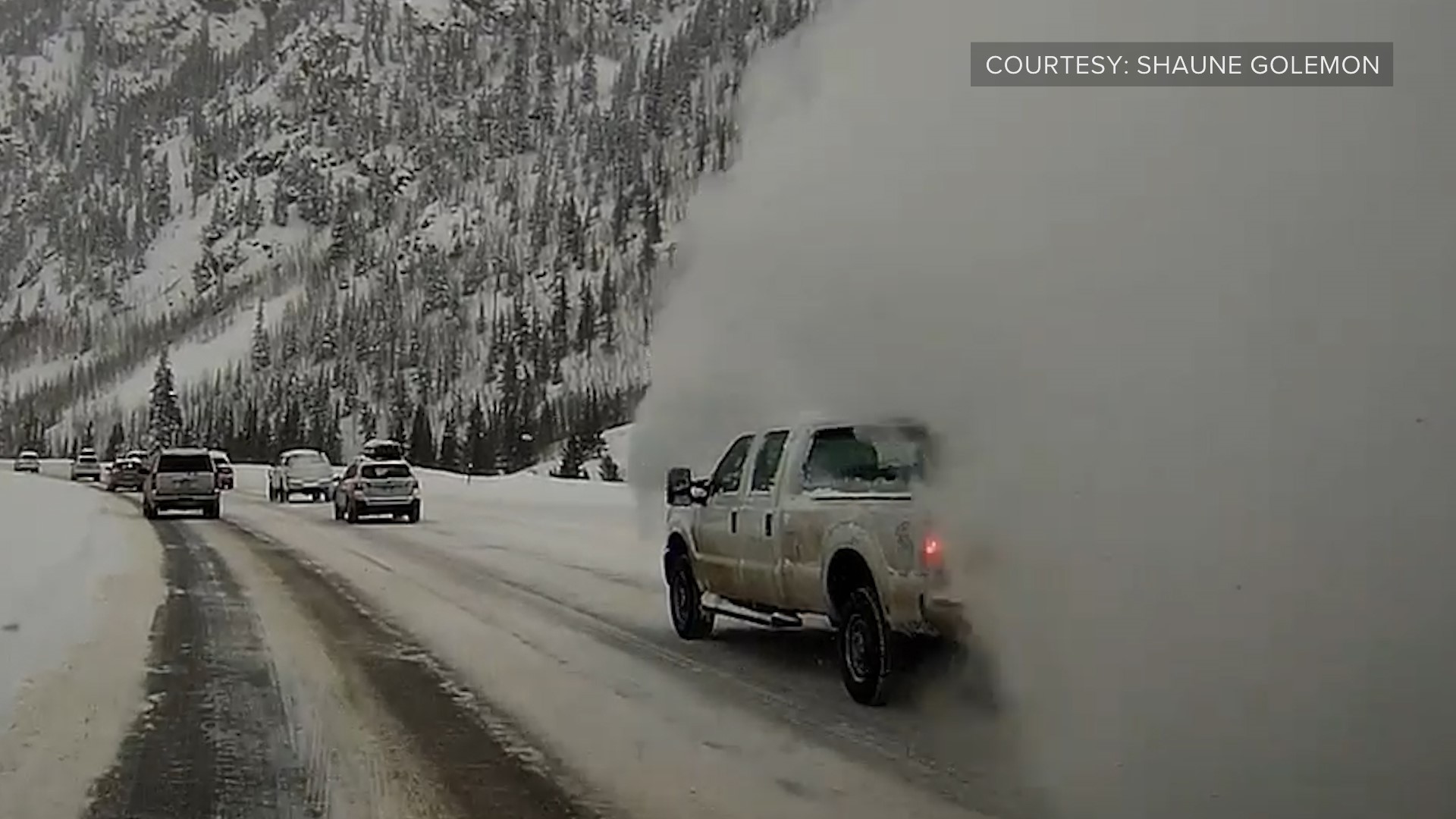Before Sunday night, it had been 30 years since an avalanche crossed an area of Interstate 70 in the Ten Mile Canyon.
Cell phone video captured the moment drivers slammed on their breaks as an avalanche cascaded down the Big Sam avalanche path and pushed into the interstate.
“We did not think that was going to happen,” said Ethan Greene, director of the Colorado Avalanche Information Center (CAIC).
Greene and his team of about 20 spent the weekend closely surveying the weather and subsequent risk of avalanches along the I-70 corridor.
Greene said it’s actually not all that uncommon for a slide to reach the highway. However, it is uncommon for it to happen when the highway wasn’t proactively closed.
The decision to close the road comes down to CAIC and the Colorado Department of Transportation (CDOT).
“There were conversations about what the level of danger was and what we should be doing about it," Green said. "We talked about a lot of different options."
Throughout the day, CDOT performed active avalanche mitigation in an effort to prevent what happened Sunday night.
Ultimately, the Colorado Avalanche Information Center recommended CDOT keep I-70 open.
“Because we were seeing avalanches that were coming down but weren’t reaching the highway and because it has been over 30 years since the last avalanche impacted the road there, we elected to keep the road open,” Greene said.
On Monday, Greene described seeing the video of the slide pushing into the interstate as “a terrible feeling because it’s what we’re working really hard to try to prevent. So your stomach kind of drops and then you take a little bit of solace in the fact that nobody got hurt.”
Greene said he and his team are using the experience to continue to fine tune the program and “make adjustments, large and small.”
CAIC uses applied science in an effort to keep drivers and those in the mountains safe.In dealing with any natural disaster, there’s a level of uncertainty.
“We’re dealing with a natural hazard similar to floods, earthquakes, hurricanes, tornadoes. We’re doing our very best to try to understand the conditions and keep the roadways safe. We never feel good when something like this happens,” Greene told us.
However, Greene emphasized knowledge is power.
Greene said because “there’s an avalanche threat to a lot of the road stretches in Colorado,” it’s important to equip yourself with as much information as possible before you hit the road or head into the backcountry.
“Look at the warnings and info CDOT is putting out and obey the road closures,” Greene said.
That tip is particularly important this winter as “we are seeing more snow than we have in the last few years” according to Greene.
CDOT reminds drivers it’s also important to prepare your car for winter weather.
That means checking tires and stocking it with blankets, food, and water in the event you get stuck in winter weather or an avalanche.
CDOT Director of Communications Amy Ford said the safest thing to do if you are caught in an avalanche on the road is to stay in your car.
“Why? Because it’s a protective environment around you. There’s air and you want to stay in it if something else comes down in that area. It’s actually the most protected environment,” Ford said.
SUGGESTED VIDEOS | Local stories from 9NEWS



